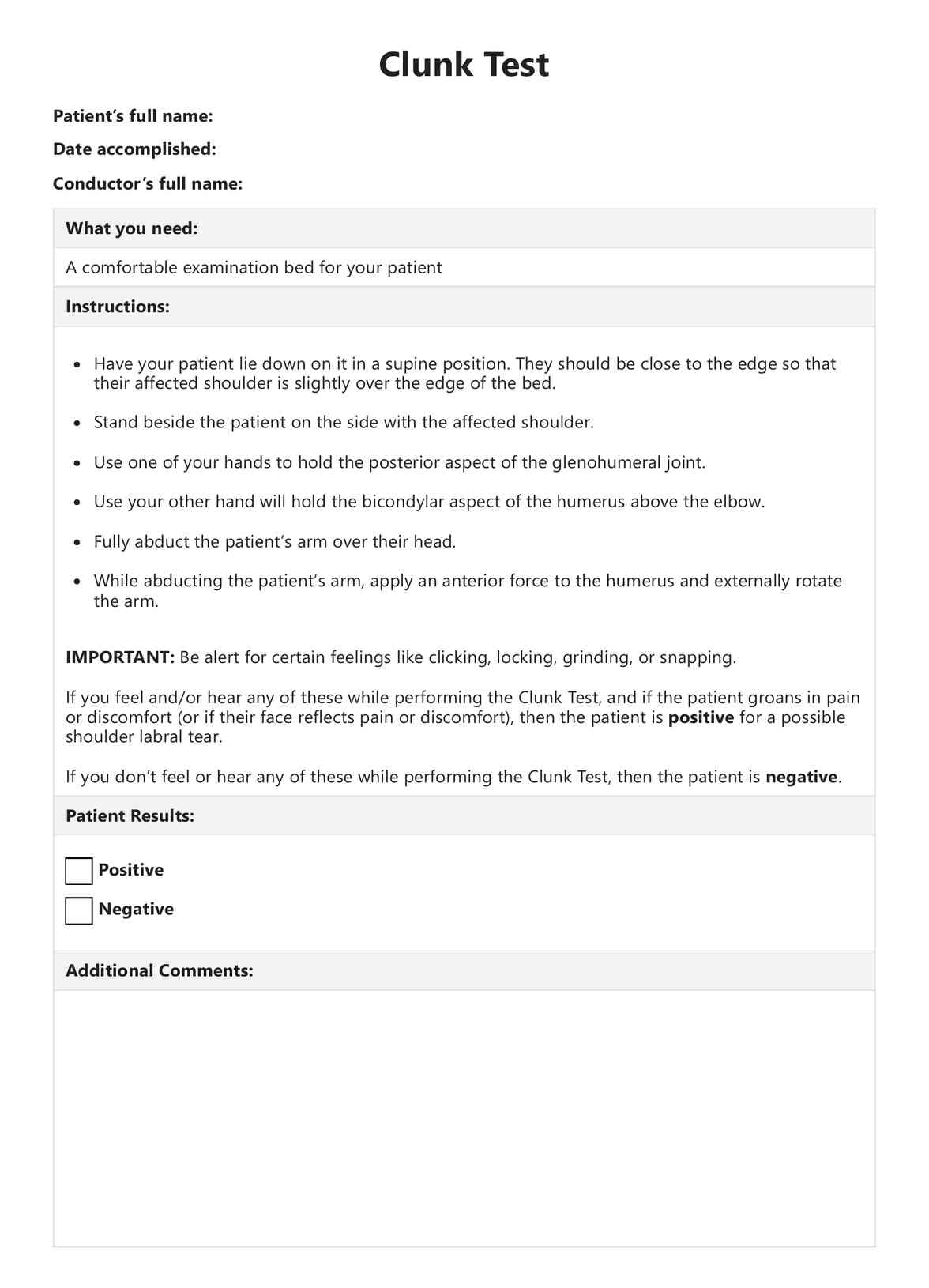Performing the Clunk Test should only take you a few minutes. It’s possible to complete this in just two minutes if you know what you’re doing. Don’t be surprised if it goes up to ten minutes. Just take your time and try to feel for any clicks, grinding, or locking in the shoulder joint. While the instructions are easy to perform, that doesn’t necessarily mean you should go for finishing the test quickly. You want to get the best results possible, after all.

Clunk Test
If you have a patient complaining of shoulder pain, perform the Clunk Test to gauge the patient for potential shoulder joint labral tears! Learn more about this test through this guide!
Clunk Test Template
Commonly asked questions
The Clunk Test is a good method to detect possible signs of labral tears. The keyword is possible. The test doesn’t confirm that there is a labral tear but only detects the possibility of it. Other tests will be the ones to confirm it, like MRI. It’s possible that clicking, grinding, or locking sounds and feelings in the shoulder joint indicate other problems, not labral tears, so, again, it’s best to include this as part of a comprehensive examination.
Normally, the Clunk Test isn’t painful. However, there might be a chance that patients will experience pain and discomfort as their healthcare professional conducts the test. But whatever pain or discomfort they feel will be caused by their pre-existing shoulder condition.
EHR and practice management software
Get started for free
*No credit card required
Free
$0/usd
Unlimited clients
Telehealth
1GB of storage
Client portal text
Automated billing and online payments











